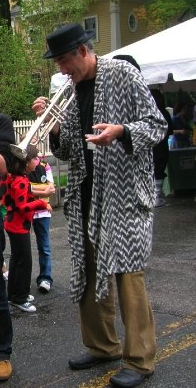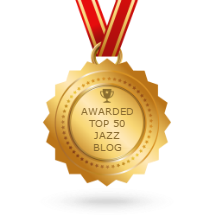 Cymbal-Head
Cymbal-Head
Why did Louis Armstrong's standing in the jazz scene plummet during his "Hello Dolly" era, as if he had not been The Man? The reason may be that 1964 was about the time that jazz lost its sense of humor. Not its sly, oblique sense of humor, but the acceptance of a broad style that included a slick dance and a straight-up belly-laugh. The change didn't happen with the Boppers, although it started to shift. Diz had one foot in the old school, one in the new. It was still acceptable for jazz musicians to sing, dance and entertain. Still hip, but increasingly less so.
To some extent, starting in the late 1950's, the entertainment part of a jazz presentation was farmed out to a new wave of comedians-L. Bruce, M. Sahl, B.Newhart, S. Berman, W. Allen, Nichols and May. The politics of the era made escapism a dirty word. We all took ourselves quite seriously.
The reason I'm on this jag is that I recently saw videos of the group "Mostly Other People Do The Killing" (MOPDtK). This is a group about which there is much to say. However, there was one particular video which featured drummer Kevin Shea doing just about everything to a drum set except eat it. And that's probably in the works. This is essentially the first time comedy and jazz have successfully been combined since the days of Pete Barbuti playing the piano with his nose and Lenny Bruce tapping on a cymbal during "To is a preposition, come is a verb;" and Lenny's bit was telling, but not funny.
In the video, deadpan all the while, Shea sticks an odd-shaped piece of paper on his nose and proceeds to straddle the drums, hump them, bump them, milk them, tangle with them, move them, disassemble them, pratfall over them and use them as a staging area for a finger puppet show. At one point, it looks like Laurel and Hardy moving a piano, but with the bass drum standing in for Ollie. The audience seems too intimidated by the 'seriousness' of the context to respond as I did-laugh out loud. It's just not done. Mr. Wooster.
After all this, Shea moves the band into a fiery "Night In Tunisia." His is a gutsy, funny and focused performance. I know, performance art, yadda-yadda, but this is essentially shtick and a little shtick never hurt anyone.



















